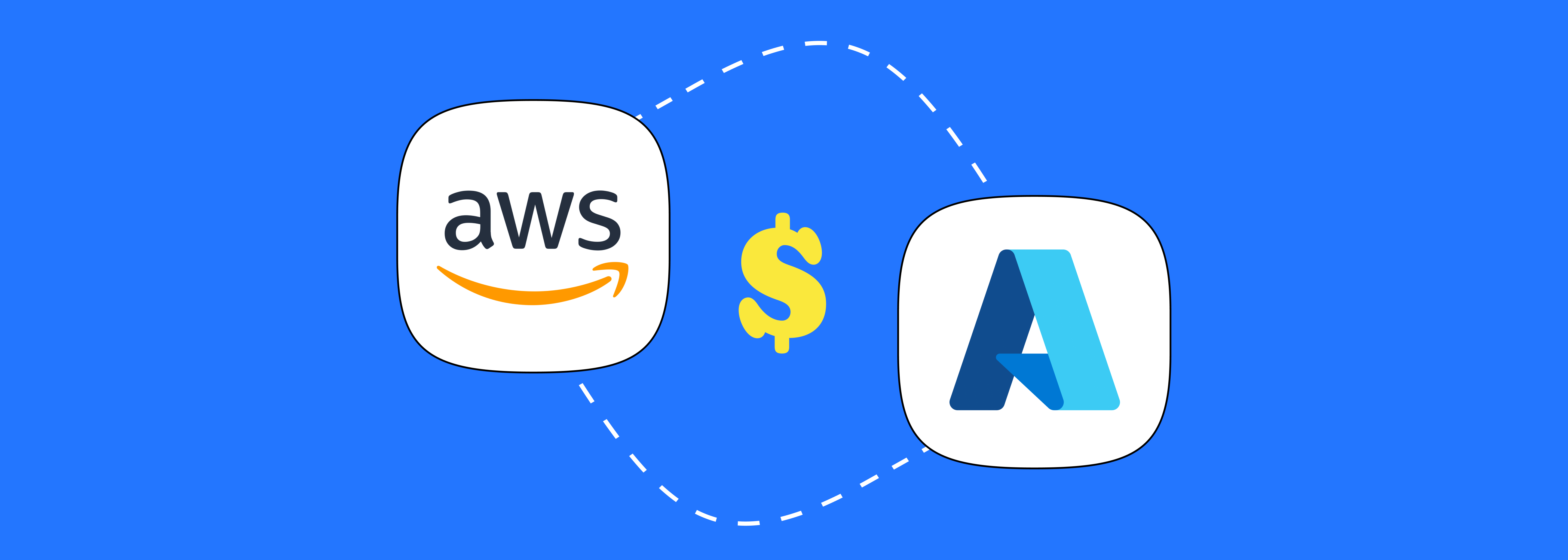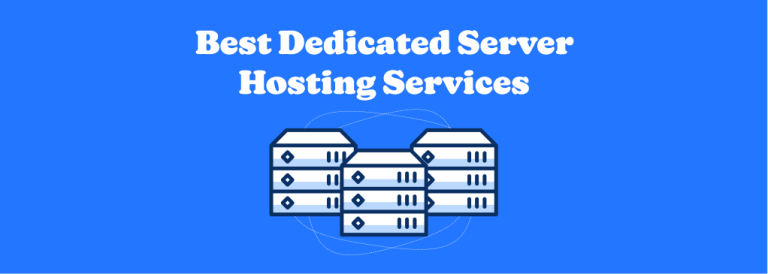AWS vs Azure Pricing: A Complete Comparison
You’re building a project, and you don’t want to choose the wrong provider for your needs.
Analyzing the pricing of your options will be key to avoiding overpaying in the long run once you scale your operations.
Azure and AWS are some of the main cloud service providers. Both reliably help thousands of businesses run. In fact, they’re the top 2 players in the cloud industry, with AWS holding 31% of the market share and Azure in second place with 25%.

Let’s go over the pricing so you can make the best decision for your situation.
Azure vs AWS Pricing Comparison
Both Azure and AWS utilize consumption-based pricing models. This allows businesses to pay only for the resources they use, which is great for scaling businesses. However, you should be mindful of this because you don’t want to blindly scale without checking.
If you want a simple solution to not go overboard with your spending, use a virtual card with custom spending limits like ours (NachoCards). If you use them, you can also get 7% cashback on your AWS spend plus 5,000 free credits. And you can also save 15% on your Microsoft 365 Business Plan.
Moving on, Azure’s pricing is minute-based, offering more granular billing, while AWS rounds up to the nearest hour. Azure’s pricing also includes reserved instances for one or three years, and spot instances for discounted, interruptible workloads. Plus, a hybrid benefit for users with on-premises licenses, allowing significant savings when migrating these workloads to the cloud.
AWS provides a similar structure with on-demand pricing, reserved instances, and spot instances. Additionally, AWS offers savings plans that provide discounts for consistent usage of specific resources over a committed period.
We’ll go more over the pricing for each of the core services below but also share some saving opportunities.
Azure vs AWS Pricing Comparison of Core Services
Compute Costs
Virtual machines (VMs), container services, and serverless computing are necessary to run applications, manage workloads, and scale resources efficiently in the cloud. Here is a comparison of the virtual machines each provider offers.
Check out Azure’s virtual machine pricing and AWS VM pricing for more detailed and up to date cost information.
| Provider | VM Series | Price per Month / Hour | Description |
| Azure | B-Series | $3.80 per month | Suitable for workloads with flexible vCPU requirements such as web servers, small databases, and development environments. |
| Azure | D-Series | $41.61 per month | Designed for general-purpose workloads with balanced CPU, memory, and temporary storage. |
| Azure | F-Series | $35.77 per month | Ideal for compute-intensive workloads like medium-traffic web servers and batch processes. |
| AWS | t4g.xlarge | $0.1344 per hour | Delivers a baseline level of CPU performance with the ability to burst to higher performance. |
| AWS | c5.xlarge | $0.192 per hour | Suitable for high-performance compute needs such as batch processing and distributed analytics. |
Storage Costs
Storage is another main service businesses use Azure and AWS for. These services allow small to enterprise-size companies to safely store huge amounts of data on the cloud for easy access.
We added the storage costs on the table below but you can see the full pricing for Azure here and AWS here.
| Provider | Storage Tier | Price per GB | Description |
| Azure | Hot | $0.0184 | Suitable for data accessed frequently. |
| Azure | Cool | $0.01 | Designed for data that is infrequently accessed and stored for at least 30 days. |
| Azure | Archive | $0.00099 | Ideal for data that is rarely accessed and stored for at least 180 days. |
| AWS | Standard | $0.023 | Used for data that requires frequent access. |
| AWS | Infrequent Access | $0.0125 | Suitable for data that is less frequently accessed but requires rapid access when needed. |
| AWS | Glacier | $0.004 | Designed for long-term archiving where data retrieval times of several minutes to hours are acceptable. |
Database Costs
Hardware databases were very costly for businesses. Cloud services made storing large amounts of data accessible for even the smallest businesses. Here is a short summary of the SQL database costs from Azure and AWS.
| Provider | Service | Pricing | Description |
| Azure | SQL Database (Basic) | $0.021 per DTU per hour | Basic tier pricing, suitable for small databases with predictable performance requirements. |
| AWS | RDS for SQL Server | $0.08 per vCPU-hour | Pricing for db.t3.micro instance, suitable for small applications requiring SQL Server. |
Additional Costs
Networking Costs
Make sure you look at the linked pricing for Azure bandwidth and AWS data transfer pricing resources for the most up-to-date information.
| Provider | Service | Pricing | Description |
| Azure | Data Transfer (Egress) | $0.087 per GB for first 10 TB | Charges for data transfer out of Azure data centers. |
| Azure | Load Balancing | Varies | Charges depend on the type and configuration of the load balancer used. |
| AWS | Data Transfer Out | $0.09 per GB for first 10 TB | Charges for data transfer out to the internet. |
| AWS | Elastic Load Balancing (ELB) | Varies | Additional charges based on the type and amount of data processed. |
Management and Support Fees
For certain advanced projects, you might want to get some support. Here is an overview of the pricing you can expect for these services. Azure support pricing and AWS support pricing.
| Provider | Support Plan | Pricing | Description |
| Azure | Developer Support | $29/month | Suitable for trial and non-production environments. |
| Azure | Standard Support | $100/month | Intended for production workload environments. |
| Azure | Professional Direct | $1,000/month | Designed for business-critical dependence. |
| AWS | Developer Support | $29/month | Offers support for early development. |
| AWS | Business Support | Starts at $100/month | Tailored for production environments. |
| AWS | Enterprise Support | Starts at $15,000/month | Aimed at mission-critical workloads, providing comprehensive support. |
Licensing Costs
Azure: Includes licensing costs in its VM pricing, with additional savings for customers using the hybrid benefit for Windows Server and SQL Server licenses.
AWS: AWS also includes Windows Server licensing in EC2 instance pricing, with BYOL (bring your own license) options available.
Is Azure or AWS better for your business?
Now let’s look at the different aspects that might help you define which platform will be better for your business.
To make the best decision, just make sure you first determine what are your goals for your project and know what are the technologies that will be needed. With that out of the way, look into all of the following aspects.
Service Offerings and Features
Both Azure and AWS offer a wide range of services tailored to various business needs, but they excel in different areas.
AWS is recognized for its extensive suite of services, covering over 200 fully-featured offerings in compute, storage, databases, networking, analytics, and machine learning. This extensive catalog makes AWS a leader in cloud innovation, providing advanced services like Amazon Aurora, a high-performance relational database, and AWS Lambda, which allows serverless computing.
These unique services make AWS particularly suitable for businesses seeking cutting-edge technology and scalability.
Azure, on the other hand, integrates seamlessly with Microsoft’s ecosystem, making it an ideal choice for businesses already invested in Microsoft products. Azure offers strong capabilities in AI with Azure Cognitive Services and lifecycle management through Azure DevOps. Plus, Azure’s hybrid cloud solutions, such as Azure Stack and Azure Arc, are unmatched, allowing for seamless management of on-premises, multi-cloud, and edge environments.
So, Azure is another powerful option but to take full advantage of it, you might want to be using the Microsoft ecosystem already. It will integrate much better with your current systems.
Performance and Reliability
In terms of performance and reliability, both Azure and AWS are highly robust, so you won’t generally run into issues. Their geographically dispersed data centers ensure high availability and redundancy.
Now, the recent Microsoft outages have been significant for a large amount of Microsoft users, and it might question the reliability of the service. However, it’s important to note that the issue wasn’t necessarily Microsoft’s fault. Rather, a third-party company called CrowdStrike, which sent a faulty update to its customers.
AWS is renowned for its reliability, providing a service level agreement (SLA) of 99.99% uptime for most services. Its global infrastructure is designed to support failover and disaster recovery, maintaining a strong track record of uptime despite occasional outages, such as the significant S3 outage in 2017.
Despite these incidents, Azure’s and AWS’ are generally robust networks.
Ease of Use and Integration
The user interface and management tools of Azure and AWS cater to different user preferences and needs. AWS Management Console is comprehensive but can be complex due to the sheer number of services available. AWS provides additional tools like the AWS Command Line Interface (CLI), AWS Managed Services, and software development kits (SDKs) for better automation and resource management.
Azure’s portal is known for its user-friendly interface, making resource management straightforward. It offers tools like Azure CLI, PowerShell, and Azure Resource Manager for automation, which enhances user experience. If you plan to leverage Cognitive Services or Azure OpenAI, you can hire Azure AI developer to accelerate integration and cost-efficient deployments.
Azure’s deep integration with Microsoft products, such as Office 365, Active Directory, and Dynamics 365, allows for seamless operation within the Microsoft ecosystem. This integration is a significant advantage for businesses heavily reliant on Microsoft technologies, facilitating easier transitions and unified management.
Cost Optimization Strategies
When it comes to pay-as-you-go pricing, there are multiple ways you can optimize your spend. Either to not spend as much money by cutting costs or saving through discounts and free credits-
Discounts and Free Credits
Starting with the easiest way to save money on these services, you can save 7% of all your AWS spend simply by doing your billing through NachoNacho, the largest and best software discount marketplace. You can also get $5,000 in free credits for AWS.
In the case of Azure, you can get a 15% discount on your Microsoft 365 Business Plan.
Redeeming these offers on NachoNacho is very simple and safe. It will take you a few minutes, but if you have any questions about the redemption process or NachoNacho, feel free to send us a message!
Right-Sizing Resources
Both Azure and AWS offer a variety of instance types tailored to different workloads. Regularly review your resource usage and adjust your instance sizes to match your actual needs. For example, downsizing from an underutilized large instance to a smaller one can significantly cut costs.
Utilizing Reserved Instances and Savings Plans
Commit to using specific resources for one or three years to take advantage of significant discounts. AWS offers Reserved Instances and Savings Plans, which can provide up to 75% savings compared to on-demand pricing. Similarly, Azure’s Reserved VM Instances offer up to 72% savings.
Leveraging Spot Instances
For workloads that can tolerate interruptions, use Spot Instances (AWS) or Spot VMs (Azure). These instances allow you to use excess cloud capacity at a fraction of the cost, often up to 90% cheaper than standard rates.
Auto-Scaling and Elasticity
Implement auto-scaling to dynamically adjust the number of running instances based on demand. This ensures you are only paying for the compute power you need at any given time, which is particularly effective for handling variable workloads.
Using Cost Management Tools
Both AWS and Azure offer robust cost management tools. AWS Cost Explorer and Azure Cost Management + Billing provide insights into your spending patterns and help identify cost-saving opportunities. Regularly review and analyze these reports to optimize your usage.
Implementing Tagging and Resource Grouping
Use tags and resource groups to organize and monitor your resources. This practice helps in tracking usage and costs more efficiently, enabling you to identify and eliminate underutilized or unnecessary resources.
Employing Serverless Architectures
Shift to serverless architectures where possible. Services like AWS Lambda and Azure Functions charge only for the actual execution time of code, making them cost-effective for intermittent workloads.
Tools and Services for Cost Management and Optimization
As the final section of this blog, we’ll share a few tools and resources that can help you manage your costs and optimize them for both platforms. These are tools developed by AWS and Microsoft themselves.
Check them out if you want to calculate your specific pricing, manage budgets, and more.
AWS Cost Explorer
AWS Cost Explorer provides detailed cost and usage reports, forecasts, and recommendations. It allows users to visualize and understand their spending patterns, making it easier to identify opportunities for cost savings.
Azure Cost Management + Billing
This tool helps Azure users monitor, allocate, and optimize their cloud spend. It provides cost analysis, budgeting, and alerts to help manage expenditures effectively.
AWS Trusted Advisor
Trusted Advisor offers real-time best practices recommendations across cost optimization, performance, security, and fault tolerance. It identifies idle resources and underutilized instances, helping users to reduce costs.
Azure Advisor
Similar to AWS Trusted Advisor, Azure Advisor provides personalized recommendations to optimize your Azure deployments. It covers cost, security, performance, and availability, offering actionable insights to reduce expenses.
AWS Budgets
AWS Budgets allows users to set custom cost and usage budgets, track spending against these budgets, and receive alerts when thresholds are breached. This tool helps in maintaining control over cloud expenditures.
Azure Pricing Calculator
The Azure Pricing Calculator enables users to estimate the costs of Azure products and services. By inputting specific configurations, businesses can forecast their expenses and adjust their cloud strategies accordingly.

Written by Andres Muñoz
If you would like to receive the latest deals added to NachoNacho, make sure you sign up for our newsletter below. We’re adding amazing software discounts you can’t miss!
Sign up for our newsletter







